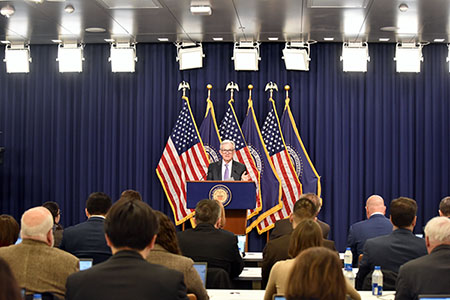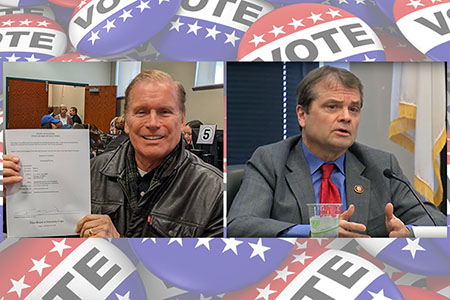
Essentially, the Financial CHOICE Act is designed to significantly amend the Dodd-Frank Wall Street Reform and Consumer Protection Act of 2010, which helped confront systemic risks in the nation’s banking system after the Great Recession. In mid-April, Republicans introduced the new bill, arguing that Dodd-Frank – and the subsequent regulation that ensued – harms economic growth and ultimately, the American consumer. On June 8, the House passed the landmark bill by a vote of 233 to 186.
The Financial CHOICE Act is supposed to achieve three major policy goals… • Convert the Consumer Financial Protection Bureau (CFPB) into a consumer law enforcement agency, subjecting it to the congressional appropriations process. • Eliminate CFPB’s supervisory authority over financial institutions and limit its power to act against entities. • Remove “Too Big to Fail,” or the Financial Stability Oversight Council’s authority to designate non-bank financial institutions and financial market utilities as “systematically important.” Republicans insist that the Financial CHOICE Act offers financial institutions of all sizes an avenue to freedom from an overly burdensome and highly intrusive regulatory regime in exchange for the institutions maintaining significantly larger capital reserves than currently required. The intent of the bill is to create hope and opportunity for investors, consumers, and entrepreneurs by holding Washington and Wall Street accountable, and eliminating red tape to increase access to capital and credit, Republicans say. Toxic sub-prime loans targeted minorities Before Americans jump on the Republican bandwagon and buy into the Financial CHOICE Act, let’s briefly review the history of the Great Recession. When the “housing bubble” burst in 2007, government blame was focused on the eroding standards for mortgage lending and predatory lending practices often targeted at minority borrowers. A Federal Reserve Board report found that on average, African-American borrowers were 3.1 times more likely than white borrowers to receive a higher-rate loan, and Latino borrowers were 1.9 times more likely to receive a higher rate. Even when credit scores and other factors were considered, minorities paid more, the report found.
When the bargain introductory interest rates ended on the sub-prime loans, borrowers couldn’t meet their higher loan payments and the loans fell into delinquency. This had devastating effects throughout the financing system. In addition, the explosion of Wall Street trading in unregulated derivatives helped fuel the crisis and spread it to investors worldwide, creating a global meltdown. What is truly amazing is that banks and Wall Street, the richest private institutions and entities in the nation, did not have the reserves in their coffers to insulate the economy from collapse. With the massive profits made by the nation’s and world’s lenders, one would assume there should be trillions of dollars of banking and Wall Street profits stashed somewhere in huge safety deposit boxes in Zurich. Where did all the profit go? Likely it was used to buy mansions, Rolls Royce automobiles, and Rolex watches for the lenders and investment bankers. In 2009, the Obama administration pumped more than $787 billion in Troubled Asset Relief Program (TARP) funding into the banking system and Wall Street to keep the economy from collapsing into a full-blown depression.
Since the 2010 passage of the Dodd-Frank Act, 42 Illinois community banks have failed and 106 credit unions in the state have closed in the aftermath of the mortgage crisis. Following the bank bailout, the Dodd-Frank Act created a Financial Stability Oversight Council to help confront risks. Despite fierce Wall Street lobbying, federal regulators put in place tough new restrictions to prevent the nation’s biggest banks from making risky bets in the quest for profits. In late 2013, five of the nation’s top regulatory agencies approved the final version of a key component of the Dodd-Frank Act. Dubbed the Volcker Rule, named after former Federal Reserve Chairman Paul Volcker, the measure is designed to prevent risky trading that critics argued could endanger the financial system. A major focus of the rule concerns so-called portfolio hedging. The Volcker Rule is aimed at preventing big banks from engaging in speculative trading activity, or making bets in exotic financial markets. This especially targets proprietary trading, and investments in hedge funds and private equity businesses. Unfortunately, the Financial CHOICE Act repeals the Volcker Rule. So, who will benefit most from the Financial CHOICE Act, the American consumer or Wall Street? |

















